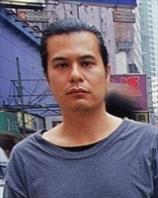The Subprimes
Review
The Subprimes
Some people may have already forgotten about Occupy Wall Street, but Karl Taro Greenfeld certainly hasn’t. In his biting, satirical second novel --- dedicated to the 99% --- he’s envisioned a near-future America where the gap between the haves and have-nots has become a chasm. The migrant poor, or subprimes, live in squatter’s camps called Ryanvilles or are shipped off to modern-day debtors’ prisons known as “Credit Rehabilitation Centers.” Virtually all government functions have been privatized; one character’s son attends the Subway Fresh Take Paul Revere Charter Middle School. Minimum wage? Outlawed under the National Right to Work Act. Environmental regulations? Abolished. It’s an exaggerated but not entirely unbelievable version of the current political and economic landscape, where the 1% just keep getting richer while the rest of America suffers.
Perhaps the biggest casualty of “this climactic age of American capitalism” is political dissent, which is virtually nonexistent. The few who don’t like the way things are going have either retreated into cynicism or have, as in the case of one character, “withdrawn, totally, into her own self, via yoga and juice cleanses and shaman therapy and picayune specificity of the foods she will put into her body.” The subprimes, who have the most reason to revolt, are totally cowed. Their main concerns are avoiding the credit police and scraping out a meager existence as day laborers for powerful corporations like those owned by Dottie and Dorrie Pepper, twin sisters who are like the evil siblings of the Koch brothers.
"Greenfeld has created a dark, funhouse mirror reflection of our current world... We may not be living in the world of THE SUBPRIMES just yet, but Greenfeld’s novel is a pointed warning that such a future may not be all that far off."
Still, a few subprimes hold out hope for a better life, coming together to build a tiny settlement among the abandoned tract homes that dot the Nevada desert. Valence has communal agriculture, free schools and dance parties. And soon, it has an unlikely resident messiah. Sagram has “been wandering her whole life,” ever since fleeing a foster home as an adolescent. She rides a motorcycle, dresses in white leathers, and is unsure of her race and exact birthday (“Thirty?” she responds, when someone asks her age). Most suspiciously, she doesn’t have a credit score. But her apartness gives her the freedom to speak truth to power. “She said she was everything, all of it, people and countries and ideas and dreams all rolled into one so that she could dream bigger and talk louder and fight harder than all the rest.”
Sagram’s foil is Pastor Roger, a celebrity preacher whose mega-church has taken over what used to be the Dallas Cowboys stadium. In his sermons he spreads an extreme version of the prosperity gospel, twisting the tenets of Christianity to serve capitalism. He urges his followers to “fight the forces of repression and regulation and socialism and progressivism who would seek to usurp God’s will by cutting off his invisible hand.” Sagram, in contrast, offers a return to a purer form of faith. Her message is not explicitly religious, yet her words seem more in line in with Biblical teachings than Pastor Roger’s sermons. “We do not want to fight --- we only ask of the government to be treated as all people should be treated,” she says when an army of private security forces arrives to evict the residents of Valence.
Given the dystopian setting of THE SUBPRIMES, it seems like the novel should be bleak and depressing, and at times it is. The dozens of whales who have beached themselves on the shores of both New York and California serve as a powerful, if obvious, sign that all is not right with the planet. But the novel’s serious message is leavened with humor and hope. Greenfeld takes great joy in envisioning the logical yet absurd conclusions of certain current trends in American politics and culture. A preteen boy brings a switchblade comb to school and is sent to “Shooters,” an afterschool program for violent youth. The super-rich zoom around on elevated highways and private jets, while the impoverished majority are stuck in gridlock on crumbling roads or flying across the country in “upright class” (no beverage service, naturally). You can call an ambulance, but the paramedic will check your credit score before he takes you to the hospital.
Greenfeld has created a dark, funhouse mirror reflection of our current world --- a sobering vision of what America might look like if certain right-wing elements had their way. Yet he’s optimistic enough to predict a way out of this mess, showing how a return to traditional community and mutual support might break “the fever spell of greed.” We may not be living in the world of THE SUBPRIMES just yet, but Greenfeld’s novel is a pointed warning that such a future may not be all that far off.
Reviewed by Megan Elliott on May 15, 2015
The Subprimes
- Publication Date: May 3, 2016
- Genres: Fiction
- Paperback: 320 pages
- Publisher: Harper Perennial
- ISBN-10: 0062132431
- ISBN-13: 9780062132437





